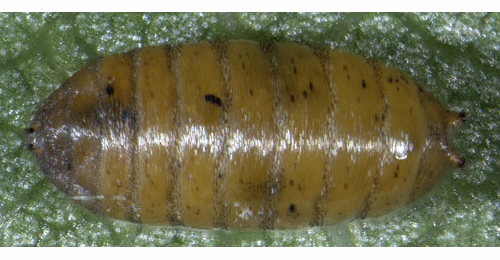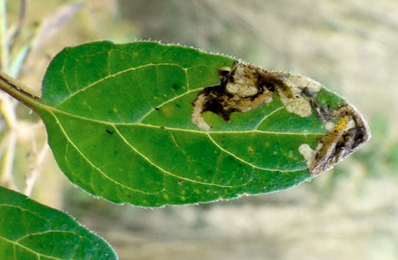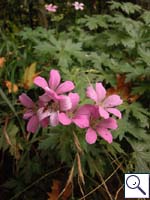|
||||||
|
GERANIUM. Herb Robert and Crane's-Bills. [Geraniaceae] |
|
|
Thirty-six species of Geranium are recorded in Britain, twelve of which are native. The BSBI provide a downloadable plant crib for Geranium. Wood Crane's-bill (G. sylvaticum) is protected in Northern Ireland under Schedule 8 of the Wildlife (Northern Ireland) Order, 1985. Three British miners are recorded on Geranium in Britain. A key to the European miners recorded on Geranium is provided in Bladmineerders van Europa. |
|
Key for the identification of the known mines of British |
1a > Leaf-miner: An initially narrow linear mine which after the first moult widens into large linear or irregular blotch; frass in distinct rows in the early linear section, later more scattered (Spencer, 1976: 128-9, fig. 221). The mine is described by Hering (1957a) as follows: Upper-surface mine. The start is corridor-like and generally follows the leaf margin. Further on the mine widens considerably, forms a secondary blotch and gets irregular sides that are deeply eaten out. Primary and secondary feeding lines clearly visible. Frass mostly in large clumps. Pupation outside the mine. The mine only rarely occurs in Geranium robertianum; the frass then is fine-grained and the mines are smaller. Hering didn't think it impossible the the miners of Geranium robertianum and the other Geranium species might be a different species. Dutch material might form a different third species. The first instar larva makes an initial corridor, with frass in two lines. Then a large irregular blotch is formed. |
 Agromyza nigrescens puparium Image: © Willem Ellis (Bladmineerders van Europa) |
|
Agromyza nigrescens Hendel, 1920 [Diptera: Agromyzidae]. |
1b > Leaf-miner: A long gallery with dispersed frass. Oviposition may be at either side of the leaf, not necessarily close to a vein. The mine is a not very tortuous corridor, not widened in the end. Frass in a broad central line. The mine strongly overlaps with the one of S. splendidissimella. |
|
Stigmella aurella (Fabricius, 1775) [Lepidoptera: Nepticulidae]. |
1c > Leaf-miner: Rather narrow corridor, untidy and sometimes branched, starting from the base of the leaf, in particular the midrib. Sides of the corridor irregularly eaten out, not really parallel. Frass mostly present, and then in a central line. The larva is capable of leaving the mine and start a new one elsewhere. These later mines are much broader, and the frass is scattered irregularly.. |
 Mine of Orthochaetes insignis on Prunella vulgaris Image: © Jean-Yves Baugnée (Bladmineerders van Europa) |
|
Orthochaetes insignis (Aube, 1863) [Coleoptera: Curculionidae]. |
| Last updated 05-Jul-2019 Brian Pitkin | ||

